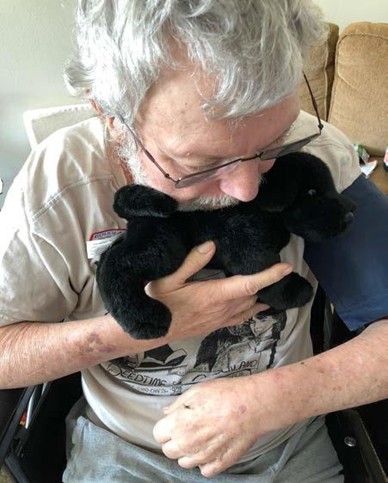
On Dementia
During the time Jim was in memory care with Lewy Body Dementia, I spent the afternoons and evenings with him. Part of the time I was in a state of rage at the facility. The rest of the time I was with Jim, the other residents, and direct care workers. I was deeply moved by their humanity. This site is an exploration of the contradiction.

While Jim was at home, I felt his loss as on-going and irretrievable. My memory of who he had been had little or no consequence in my day to day and in the quality of his care. A better comment came from Jim’s adult child — “He lost me before I lost him.” Our relationship was determined by the growing and eventually complete loss of that person we had loved, been loved by, and who was known (aside from the always present mystery). We lived with a stranger who needed constant care.
Was Jim conscious of his own loss of what many would call personhood? I cannot know in the last few years of his life. I cannot say he loved me and his children. I cannot say I loved him. We were lost.
My father, then in his late 90’s, was the primary caregiver for my stepmother who was in an advanced stage of Alzheimers. When he died before her, as most caregivers over 70 do, my siblings told her that he had died. She gave no response for some time and then said, “Well I guess I’m finally rid of my husband.” I see that as a profound expression of autonomy and spirit — of personhood. Wouldn’t most of us rage at a partner turned caregiver?
During that 11 weeks in memory care the slowing of demand allowed me to observe, not so much Jim and the unnamed institution, but the other people there. I saw direct care workers enter into intimate and caring relationships — a hug before bed, the intimacy of a transfer, an abundance of good humor and patience. And I saw the calmed response.
I rediscovered humanity in the relationships the residents formed with each other. Most of these were reciprocal. None were transactional. The four residents who plotted collective escape every evening as they sundowned, equipped with purses and jackets. Betsy with her gift of flowers in plastic cups filled with water. Lois who expressed joy in the color of the sky, still loving her husband through it all. These observations changed my understanding.
The question of personhood at the end of memory, agency, and consciousness of self has become key and complex. As a caregiver, observer, and documentary filmmaker who tries to find authenticity, some kind of non-biological understanding seems essential.